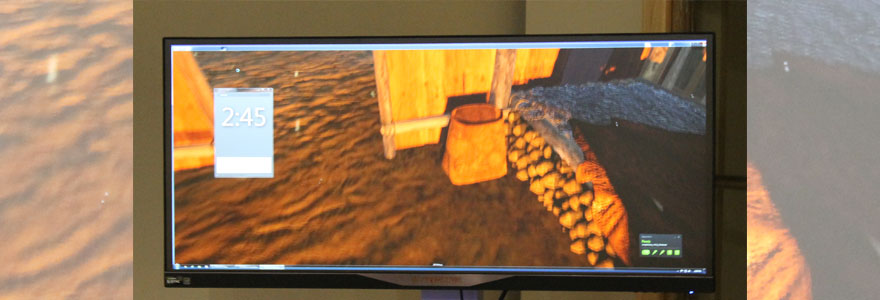News and Updates
Contact
Faculty of Social Science
Social Science Centre
Room 9438
Western University
T. 519-661-2053
F. 519-661-3868
E. social-science@uwo.ca
Recreating the 16th-century, with 21st-century technology
November 03, 2017
While prospective students are visiting Western University on Fall Preview Day, they will also have the opportunity to transport themselves to a 16th-century longhouse, through the use of 21st-century technology.
The Bio-Archaeology and Anthropology teaching Laboratory (Room 2257) will be open from 10 a.m. - 2 p.m., offering visitors the chance to experience an interactive, virtual-reality tour of a First Nations longhouse.
Using archaeological data from the Lawson Site, and other 16th-century sites, Michael Carter built the virtual longhouse as part of his PhD dissertation in the Department of Anthropology.
As archaeologists deal with below ground data, “what is above ground is unknowable,” said Neal Ferris, the Lawson Chair of Canadian Archaeology with the Department of Anthropology, and Director of Sustainable Archaeology Western.
To address these issues, Carter supplemented the archaeological data with information from written records and oral history.
The virtual exhibit is built using a video game platform, and visitors can see in detail the everyday items that may have been found in the residential dwellings, getting some understanding of what it may have been like to live in the space.
Digital archaeology is a growing field and while it has been used around the world, this is the only project to recreate a longhouse.
Building the structure virtually “can create new meaning of archaeological data through testing,” said Ferris.
Using the virtual interface allows archaeologists to test different theories, make adjustments to structures, and challenges their understanding of how structures may have been built and used. The virtual interface is also much more affordable than trying to recreate a structure in the physical world, which could cost $30-$40,000.
It also allows for the display to travel and lets archaeologists reach audiences in a new way. “It’s a very different experience than seeing displays under glass,” said Ferris.
In future iterations, the project leads want to include 3D models of artifacts in the longhouse recovered from the Lawson site, showing where they were found which can provide more context and understanding.
“Archaeology is a technical science focused on minutia,” said Ferris “The virtual longhouse is an important bridge between the science of archaeology and the heritage of the past.”
Students at Western are exploring other ways to enhance understanding through the use of technology. Students in a joint graduate/undergraduate Anthropology course are learning about developing digital content to create guides which can be accessed through cell phone, making information like the virtual longhouse more readily available.
The Virtual Longhouse will be on display at Fall Preview Day in the Social Science Centre, Room 2257. The public can also explore the display at the Museum of Ontario Archaeology.

